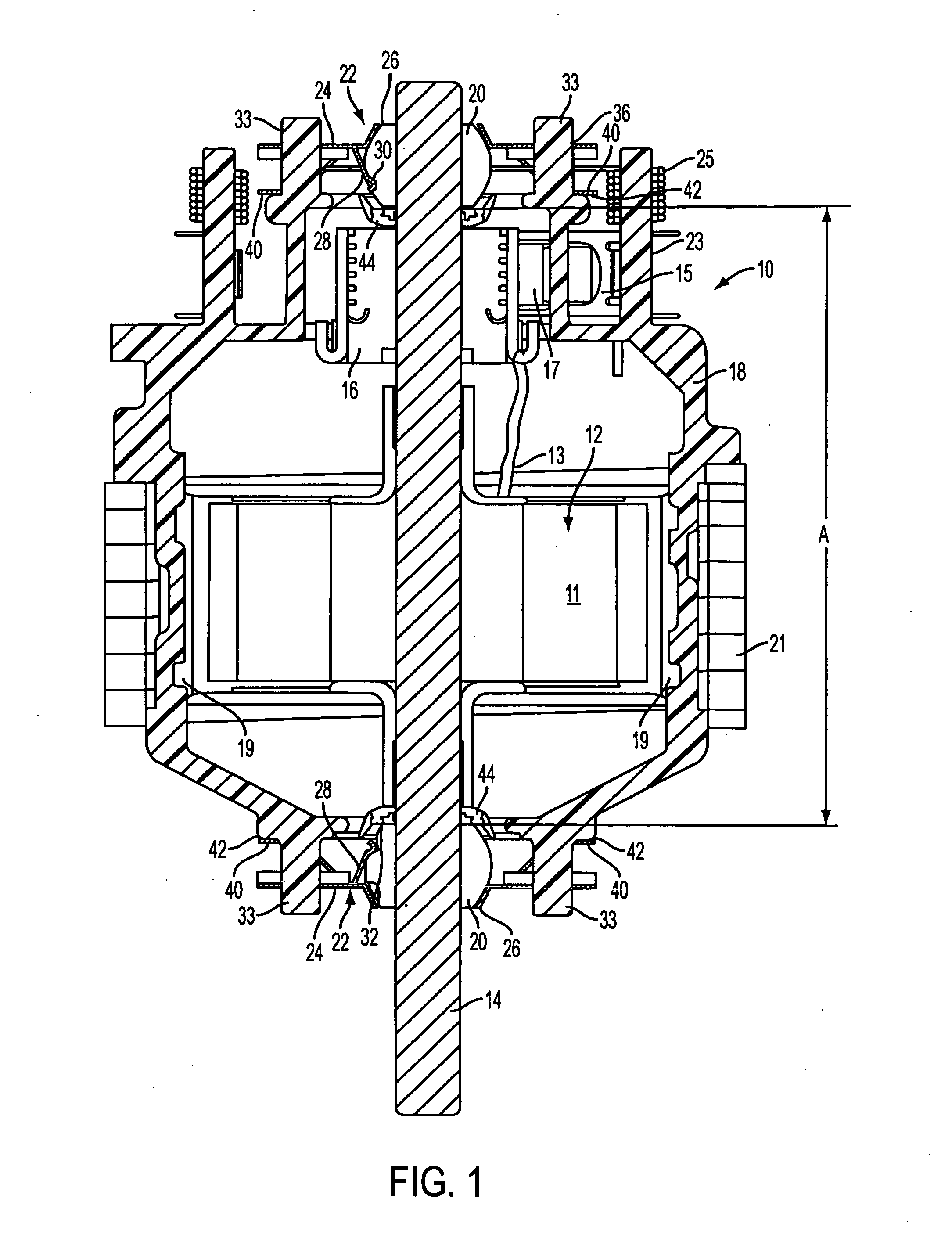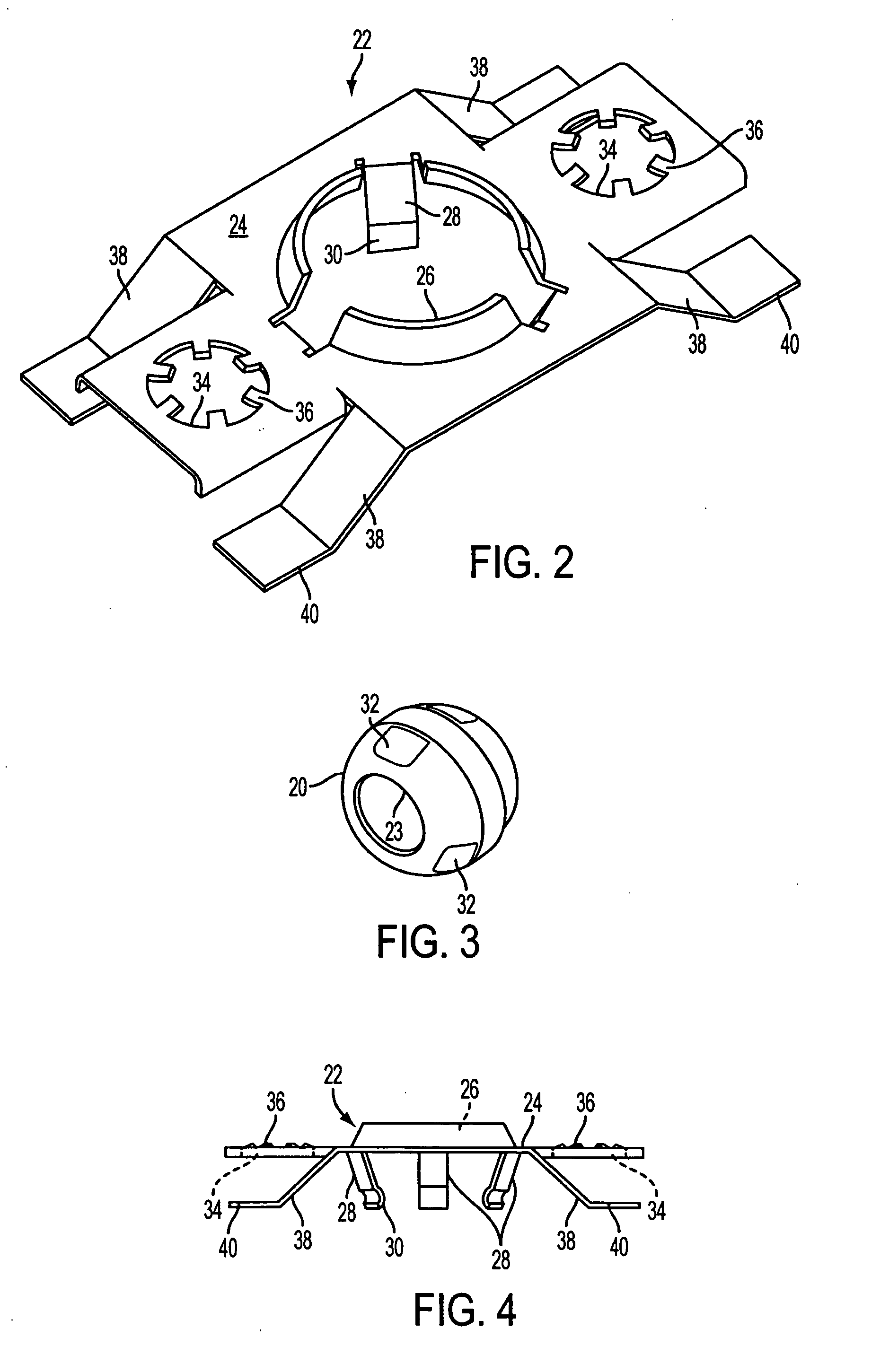Endplay adjustment and bearing decoupling in an electric motor
a technology of bearing decoupling and endplay, which is applied in the direction of sliding contact bearings, mechanical energy handling, mechanical equipment, etc., can solve the problems of contributing to the overall motor noise and causing bearing/structure nois
- Summary
- Abstract
- Description
- Claims
- Application Information
AI Technical Summary
Benefits of technology
Problems solved by technology
Method used
Image
Examples
Embodiment Construction
[0016] With reference to FIG. 1, an electric motor is shown, generally indicated at 10, in accordance with the principles of the invention. The motor 10 is preferably configured for automotive HVAC systems. The electric motor 10 includes an armature structure, generally indicated at 12. The armature structure 12 includes a lamination stack 11 carrying windings 13 (the complete set of windings is not shown in the interest of clarity of FIG. 1). The armature structure 12 also includes a shaft 14 and a commutator 16 coupled with the shaft 14. Brushes 17 engage the commutator 16 and conduct electrical current to the windings 13 which are connected to the commutator 16. Each brush 17 is carried by a brush arm 15 that is coupled to a support 23 of the frame structure 18 of the motor 10. A spring 24 biases the brush arm 15 and thus brush 17 into contact with the commutator 16. Two permanent magnets 19 are disposed adjacent to the lamination stack 11 and are carried by the frame structure 1...
PUM
 Login to View More
Login to View More Abstract
Description
Claims
Application Information
 Login to View More
Login to View More - R&D
- Intellectual Property
- Life Sciences
- Materials
- Tech Scout
- Unparalleled Data Quality
- Higher Quality Content
- 60% Fewer Hallucinations
Browse by: Latest US Patents, China's latest patents, Technical Efficacy Thesaurus, Application Domain, Technology Topic, Popular Technical Reports.
© 2025 PatSnap. All rights reserved.Legal|Privacy policy|Modern Slavery Act Transparency Statement|Sitemap|About US| Contact US: help@patsnap.com



